Certain dishes echo the voices of generations past, filling the air with the warmth of age-old traditions and the promise of a shared culinary heritage. Chitterlings, also known as ‘chitlins,’ are one such dish—the quintessential soul food that has cemented its place in the hearts of food enthusiasts and home cooks. Today, we’re unwrapping the ritual of chitterlings recipe, not just as a recipe but as an invaluable cultural narrative that stands as a testament to the rich tapestry of Southern cuisine.
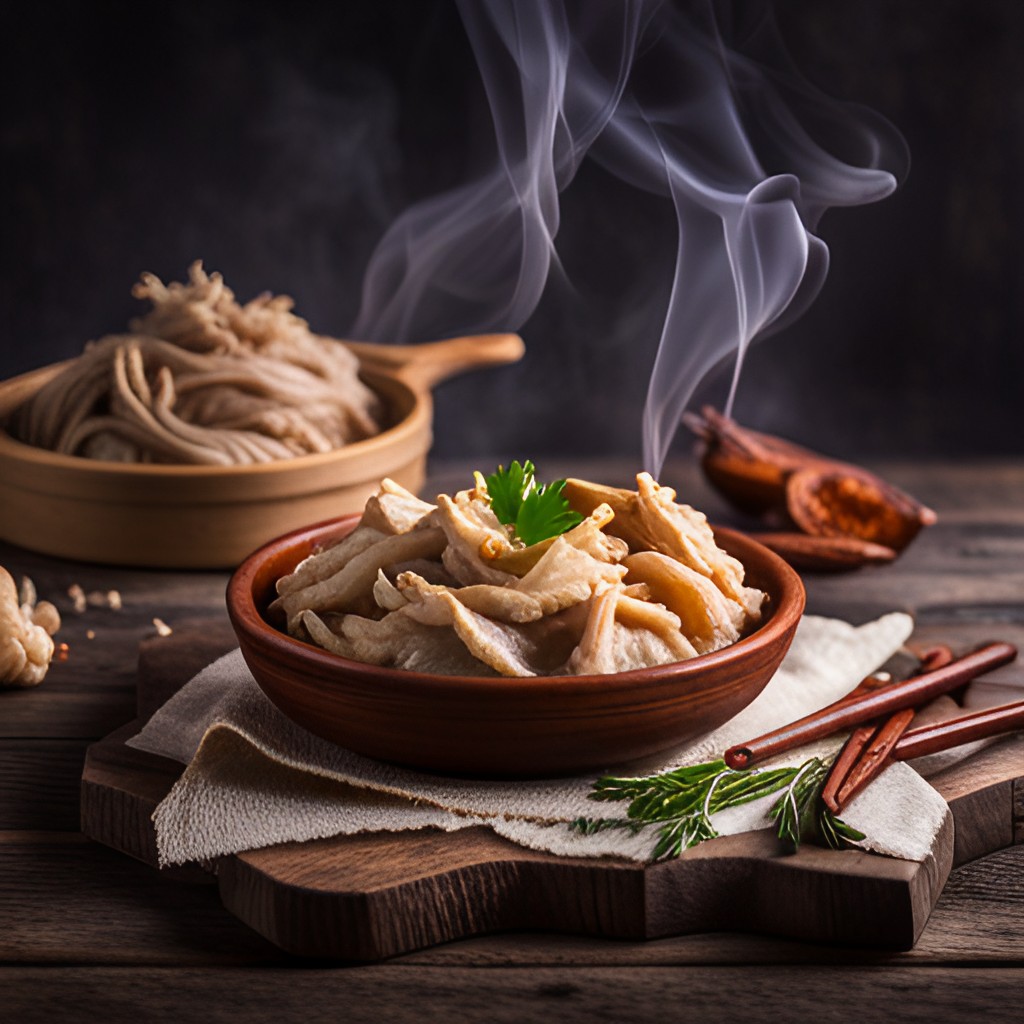
The Legacy of chitterlings recipe
A once humble ingredient that sustained our ancestors, chitterlings have evolved into a much-loved soul food staple, particularly in African-American cuisine. It’s not just about the taste but the memories they conjure—the countless gatherings, stories, and songs that ebbed and flowed around the kitchen table as our families feasted on this cherished dish. To understand chitterlings is to grasp a thread of the robust cultural fabric woven into the heart of Southern cooking traditions.
The History on Your Plate
Chitterlings originated as the “by-product” of pork butchery, often reserved for those who couldn’t afford to waste any part of the animal. From the fields of the antebellum South to the bustling kitchens of the Civil Rights movement, chitterlings remained a comforting constant, adapting along with the culture they nourished. The laborious cleaning process, part of the legacy from times of necessity and scarcity, is now a ceremonial rite, an expression of meticulous craft and respect for the dish.
A Cultural Garnish
Chitterlings are more than the sum of their succulent parts—they reflect an assortment of cultural imprints, each adding layers of flavor to the dish’s lore. Insights into slave cookery and their resourceful innovation, tales of resilience and reclamation, and profiles of pioneering chefs who brought chitterlings to the forefront of the culinary stage—all have a place in the story of this dish.
Welcoming the Aroma of Tradition: Chitterlings Reimagined in Your Home Kitchen
Course: Dinner, RecipesCuisine: Southern culinaryDifficulty: Easy12
servings1
minute3
minutes312
kcalThe Signature Chitterlings Recipe
In your endeavor to recreate this storied meal, we offer a step-by-step guide that goes beyond the basics, injecting flavor nuances and techniques to honor the chitterlings’ narrative.
The Essential Ingredients
Fresh Chitterlings
Onions, Garlic, and Fresh Herbs
Seasoning Mix (Black Pepper, Cayenne, Paprika, etc.)
Cooking Oil or Lard
Step-by-Step Preparing Chitterlings
- Cleanse with Care: Initially, chitterlings require a thorough wash, scrub, and soak, typically with vinegar and salt, to rid them of any residual odors and impurities.
- The Tender Touch: Boil the chitterlings with aromatics until fork-tender. This not only cooks the meat but infuses comforting flavors.
- The Sizzle and Scent: Drain and sauté the chitterlings with a medley of seasonings, creating a robust, savory aroma that permeates the home.
- Plate with Pride: Garnish your chitterlings dish with fresh herbs and serve with pride, knowing you have prepared a meal that resonates with cultural ties.
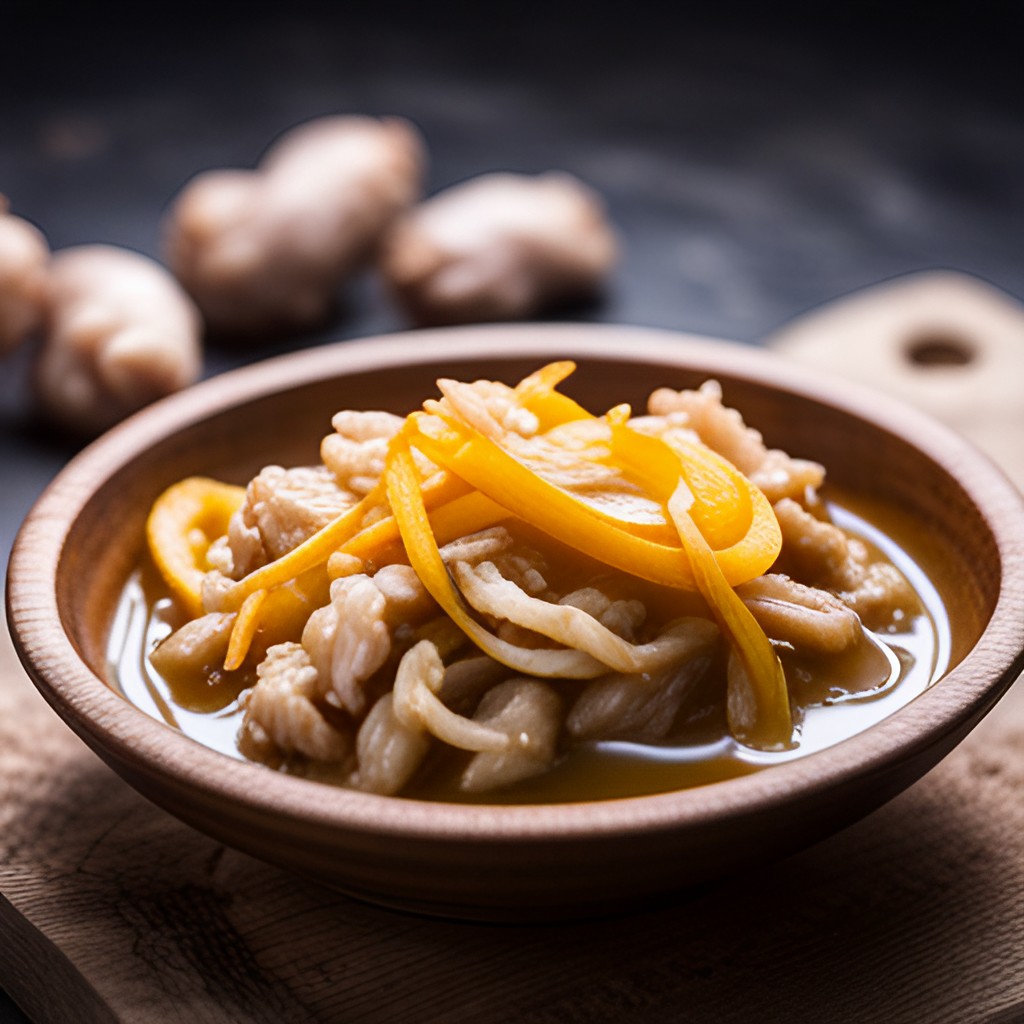
Recipe Video
Notes
- Chitterlings should be handled and cooked with caution due to the risk of foodborne illness. It is important to thoroughly clean and cook them at a high temperature to ensure they are safe to eat. Always follow proper hygiene practices when preparing chitterlings, and if in doubt, consult a trusted recipe or seek advice from an experienced cook.
Enhancing the Chitterlings Experience
For an elevated chitterlings encounter, experiment with the heat level—adjusting the spices to your preference or infusing a Southern smokiness by adding a touch of liquid smoke to the boiling process. The key here is the taste and the confidence to add your flair to a dish that embodies a legacy.
Nutritional Perspective
While chitterlings are rich in protein and various micronutrients, they also come with health considerations. Moderation is essential, as with any rich, fatty food. Incorporating this recipe sporadically offers a moment to indulge in flavor and cultural history but with an understanding of its place within a balanced diet.
Nutrients Found Within
Chitterlings provide an excellent source of protein and essential nutrients such as zinc, iron, and B vitamins. However, it’s important to consider the fat content and cholesterol levels, which may call for mindful consumption.
Indulgence with Awareness
The reverence with which one approaches chitterlings is equally shared with the awareness of their nutritional profile. It’s about a conscious choice to celebrate through cuisine while being attuned to one’s dietary needs.
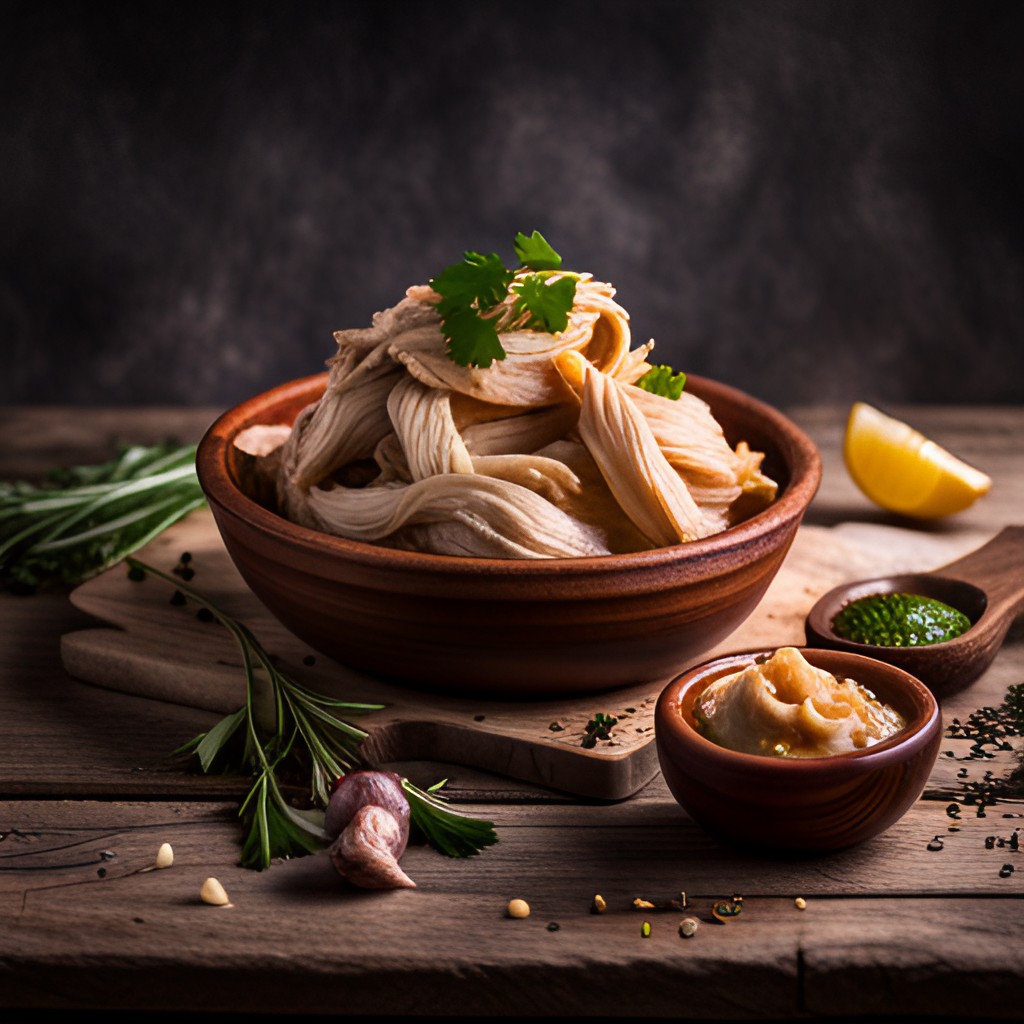
Pairing the Tradition
No dish is an island, and certainly not chitterlings. To truly celebrate this meal, the art lies in the pairing. Think of sides like collard greens, candied yams, cornbread, and perhaps a tall glass of sweet tea or an ice-cold soda—the classic soul food table laid out in all its glory.
The Aroma of a Feast
By considering the entire spread, from entrée to accompaniments, you orchestrate a symphony of flavors that encapsulates the soul food experience—a harmonious blend of sweet, savory, smoky, and spice. Each dish complements the other, creating a melody that echoes for generations.
Reimagining Tradition
While we cherish the traditional chitterlings recipe, there’s always room for innovation. Think beyond the usual suspects and reimagine this dish in a modern way. Try a fusion twist with Asian spices or incorporate chitterlings into a hearty stew or chili.
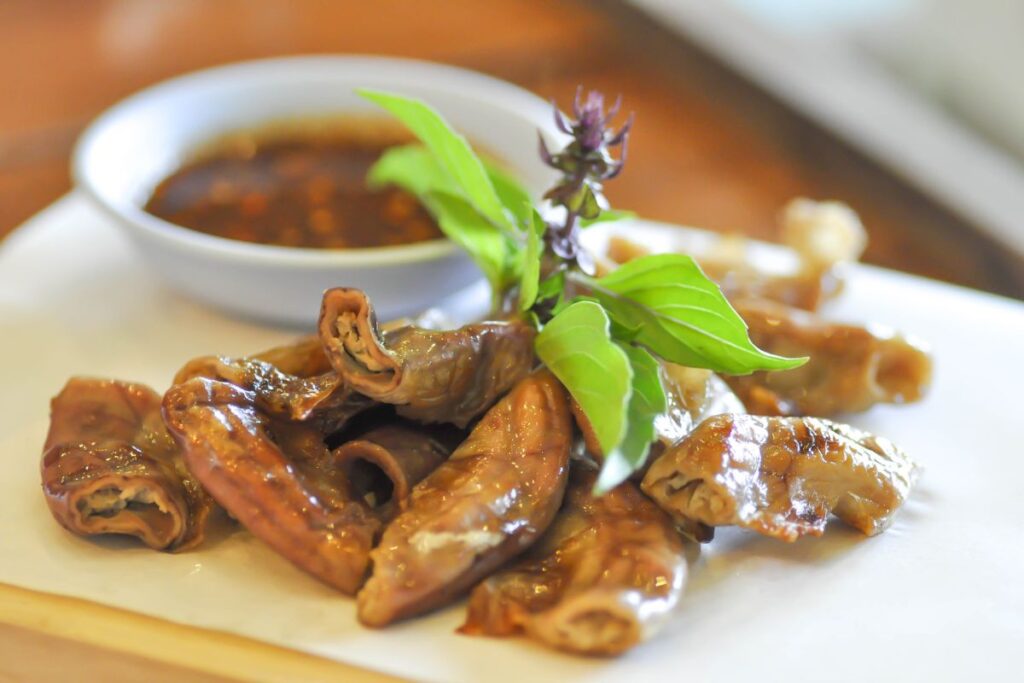
Serving the Chitterlings
Serving chitterlings is more than just placing them on a plate and digging in. It’s an opportunity to create an experience that honors this dish’s history, culture, and flavors. Here are some tips for serving chitterlings with care and reverence:
- Use traditional serving dishes: To truly capture the essence of chitterlings, consider using conventional serving dishes such as a cast-iron skillet or a large ceramic bowl. This adds an extra touch of authenticity to the meal.
- **Garnish with herbs: As mentioned in the recipe, garnishing your chitterlings dish with fresh herbs adds visual appeal and enhances the flavors and aromas. Consider using parsley, thyme, or rosemary for a pop of color and fragrance.
- Serve with a story: Not only are chitterlings a delicious meal, but they also have a rich history. Serve the dish briefly, explaining its origins and significance in African-American cuisine. This adds another layer of depth to the dining experience.
- **Encourage communal dining: Chitterlings are often served family-style,
Conclusion: A Treasure Rediscovered
Recreating chitterlings in your kitchen transcends a mere recipe; it’s an act of preservation and a reconnection with the roots of Southern culinary art. Whether you’re a connoisseur seeking to perfect the dish or a novice eager to explore new flavor territories, chitterlings invite you to discover history through taste.
The allure of chitterlings is universal yet wrapped in a distinctly cultural context. By engaging with the recipe and understanding its narrative, you are not merely cooking a dish but breathing life into tradition. It’s about that first whiff of simmering chitterlings, carrying you back in time, allowing you to partake in a legacy that continues to thrive in modern kitchens.
This blog post is a beacon for the avid home cook and the curious food lover—an exploration of a recipe that embodies the essence of ‘slow food’ both in practice and spirit. But beyond the culinary adventure, it is a nod to a community that gathers strength from its past as it strides into the future. Remember, as you simmer and spice your pot of chitterlings, you’re not just making dinner; you’re part of a long, cherished continuum that links families across time and place through the simple yet profound act of breaking bread.
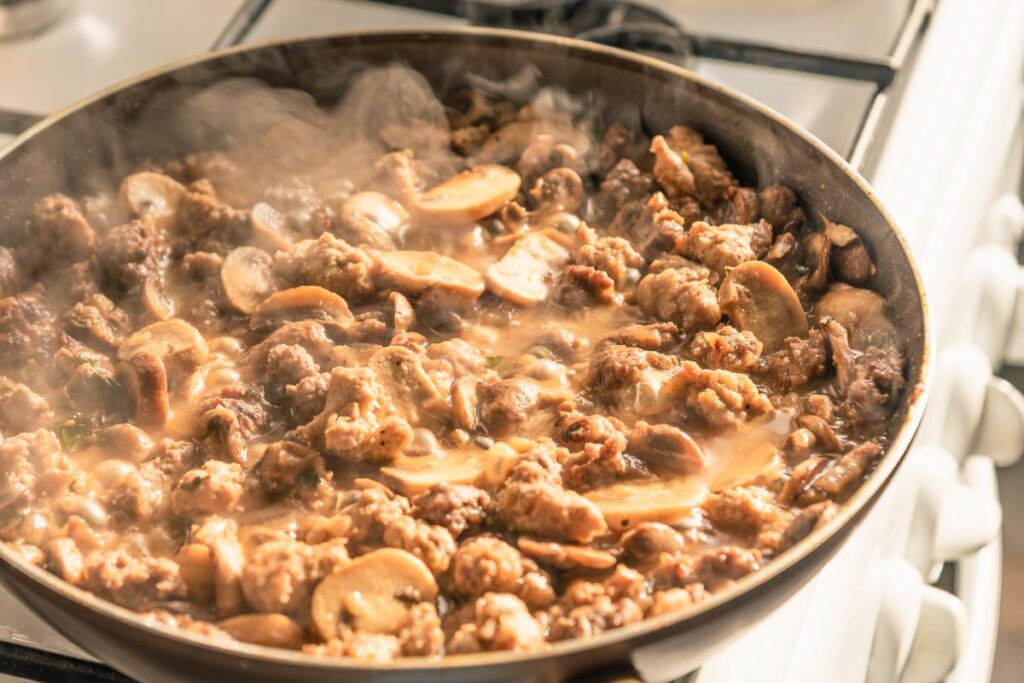
Frequently Asked Questions (FAQs) about Chitterlings
Q: What are chitterlings?
A: Chitterlings, often referred to as “chitlins,” is a traditional Southern dish made from the small intestines of pigs. They are a delicacy enjoyed in various cultures worldwide, and they are known for their rich history and unique flavor.
Q: How do I remove the smell while cooking chitterlings?
A: The distinctive smell of chitterlings can be minimized by thoroughly cleaning them with vinegar and salt before cooking. Boiling them with aromatic ingredients like onions, garlic, and herbs can also help mask the odor during cooking.
Q: Are chitterlings healthy to eat?
A: Chitterlings are protein-rich and provide various nutrients like iron and B vitamins. However, they are also high in fat and cholesterol. Consuming them in moderation and as part of a balanced diet is recommended.
Q: How long does it take to cook chitterlings?
A: Cooking times can vary, but typically, chitterlings need to be boiled for several hours until they are tender. The exact time can depend on the quantity and the desired tenderness.
Q: Can chitterlings be cooked differently than boiling?
A: While boiling is traditional, chitterlings can also be prepared by frying or baking. Each method provides a distinct texture and flavor profile, allowing for diverse culinary exploration.
Q: How can I ensure chitterlings are cleaned properly?
A: Proper cleaning involves removing fat and residue from the intestines, then thoroughly rinsing and soaking them in a cleaning solution, such as vinegar and salt water. Repeat the process until the water remains clear to ensure they are cleaned well.
Q: Where can I buy chitterlings?
A: Chitterlings can be purchased at most butcher shops, specialty meat markets, and some supermarkets, especially during the holiday season. Frozen options are also available year-round in many grocery stores





